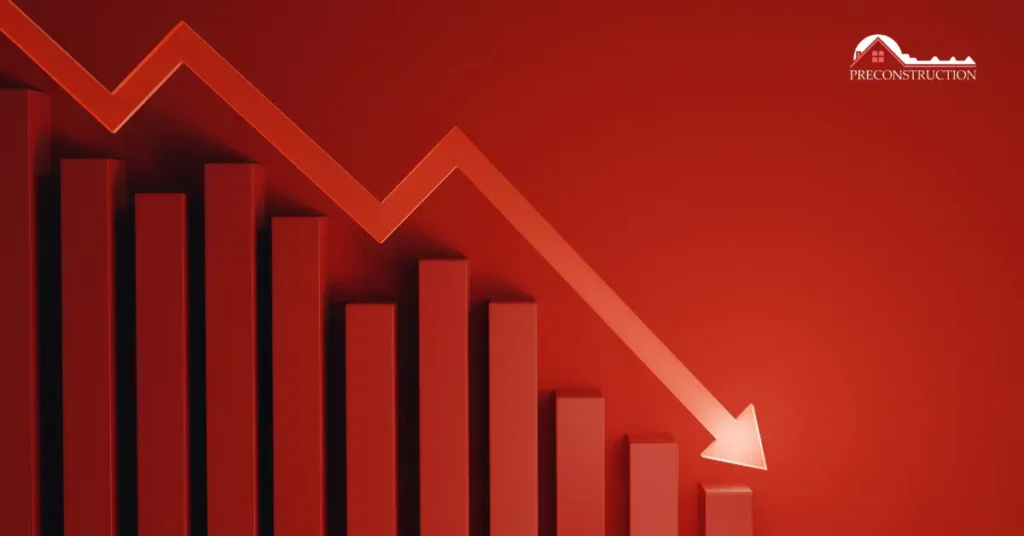Introduction: Economic Uncertainty Looms Over Canada
In recent months, a growing sense of pessimism has emerged in Canada regarding the economy’s direction. Canadians are facing a perfect storm of challenges, from domestic inflation and interest rate hikes to geopolitical risks posed by Donald Trump’s potential return to the presidency. His controversial tariff threats against Canada are causing unease among businesses and consumers alike, raising concerns over the future of Canada-U.S. trade relations. But how will these developments impact the Canadian economy? In this blog post, we will explore the factors contributing to the growing pessimism and discuss what it means for Canadians in the short and long term.
Canada’s Current Economic Landscape
Rising Inflation and Interest Rates
Over the past few years, Canada’s economy has been significantly impacted by inflationary pressures, a phenomenon not just limited to Canada but felt globally. In an effort to curb inflation, the Bank of Canada has been raising interest rates, which, while necessary to stabilize the economy, have made borrowing more expensive. This has had ripple effects across sectors, from housing to consumer spending.
- Consumer Sentiment Declines: As a result, Canadians have become increasingly cautious with their spending. The cost of everyday goods and services has gone up, causing household budgets to tighten. Even those not directly impacted by job loss or reduced income are feeling the strain, leading to declining consumer confidence.
Job Market and Economic Disparities
While Canada has maintained a relatively low unemployment rate, the job market has shown signs of instability. Many industries, particularly in manufacturing and resource extraction, face significant challenges, ranging from supply chain disruptions to reduced global demand. These economic stresses have led to an uneven recovery across the country.
Certain regions, especially those relying heavily on the oil and gas industry, are seeing more significant impacts than others. Alberta, for example, continues to feel the strain of volatile energy markets, which affects not just the province but the broader Canadian economy.
The Impact of Donald Trump’s Return on Canada’s Economy
Tariff Threats and Trade Uncertainty
One of the major drivers of Canadian pessimism is the looming possibility of tariffs being reinstated on Canadian goods as Donald Trump makes his way back into the political spotlight. While many Canadians are familiar with Trump’s protectionist policies, the potential for a renewed trade war is raising fresh concerns.
- The Impact on Canadian Exports: Canada relies heavily on exports to the U.S., with energy, automobiles, and minerals forming the core of this trade relationship. Trump’s threat to impose a 25% tariff on Canadian goods unless Canada alters its approach to border security and immigration adds a layer of unpredictability to this relationship.
- Potential GDP Losses: Economists have warned that tariffs could shave as much as 2% to 4% off Canada’s GDP, depending on how severe the measures are and how Canada responds. This scenario could put significant pressure on Canadian businesses, especially those in industries most vulnerable to trade disruptions.
U.S.-Canada Relations and Geopolitical Tensions
Beyond tariffs, Trump’s return to power could also reignite broader geopolitical tensions between the U.S. and Canada. Trump’s foreign policy style has been characterized by unpredictability, and his approach to Canada during his previous term was no exception. His administration placed tariffs on Canadian steel and aluminum and renegotiated trade deals to secure what he saw as better terms for the U.S. These policies, while having long-term consequences for Canada, also fostered uncertainty in the trade relationship between the two countries.
- Trade Agreements and Strategic Shifts: With Trump back in the White House, Canadians are bracing for more of the same aggressive rhetoric. Trade agreements like the USMCA (United States-Mexico-Canada Agreement) could be put under strain, and new barriers to trade may be erected if Trump follows through on his tariff threats.
Survey Data Reflecting Canadian Economic Pessimism
The Bloomberg Nanos Confidence Index
To better understand the depth of the growing pessimism, we can look at the Bloomberg Nanos Confidence Index, which tracks Canadian sentiment regarding personal finances, job security, the economy, and real estate. The latest survey results show a sharp decline in optimism, with the index falling to 49.08 — its lowest level since November 2023. A reading below 50 indicates a net negative view among respondents, underscoring the widespread concerns.
- The Growing Pessimism: According to the survey, 60% of Canadians expect the economy to weaken in the next six months. This marks a significant increase from just 34% only eight weeks ago, highlighting how rapidly sentiment has deteriorated in response to the uncertainty caused by potential trade disruptions with the U.S.
Impact on Real Estate
Another key area of concern for Canadians is the housing market. Rising interest rates have already made mortgages more expensive, and further economic uncertainty could dampen demand for homes, particularly in major urban centers like Toronto and Vancouver. The real estate market, which has been a key driver of economic growth in Canada, faces a potential slowdown, adding another layer of concern to the outlook.
The Broader Global Context and Canada’s Economic Future
Global Inflationary Pressures and Economic Slowdowns
Canada is not alone in facing economic challenges. Global inflation, supply chain disruptions, and energy price fluctuations are contributing to a broader economic slowdown that affects both advanced and emerging economies. As global demand slows, Canada’s reliance on exports becomes even more critical. However, if major trade partners like the U.S. continue to implement protectionist policies, Canadian businesses could face even more hurdles.
Adapting to the New Normal: Resilience in the Face of Adversity
While pessimism dominates the outlook, it’s important to consider how Canada can adapt to this changing economic landscape. There are several avenues for Canada to build resilience in the face of these challenges:
- Diversifying Trade Relationships: Canada has made strides in diversifying its trade relationships, particularly with countries in Asia and Europe. While the U.S. remains Canada’s largest trading partner, expanding trade with other regions can help mitigate the risks of being overly dependent on a single market.
- Investing in Innovation and Green Technologies: Canada’s future economic success will hinge on its ability to innovate and adapt to new technologies. Investing in green energy, digital transformation, and artificial intelligence could provide a much-needed economic boost.
- Strengthening Domestic Industries: In addition to fostering international trade, Canada should focus on strengthening its domestic industries. This includes supporting manufacturing, agriculture, and technology sectors, all of which are essential to Canada’s long-term economic health.
Conclusion: Navigating Economic Uncertainty
In conclusion, Canada faces a period of significant economic uncertainty, exacerbated by the potential return of Donald Trump to the U.S. presidency and his tariff threats. The growing pessimism among Canadians, reflected in declining consumer confidence and shifting economic expectations, points to the need for proactive measures to safeguard the country’s economic future. While the road ahead may be challenging, there are opportunities for Canada to diversify its economy, innovate, and adapt to the changing global landscape. By focusing on these areas, Canadians can work toward a more resilient economic future, even in the face of mounting uncertainty.






